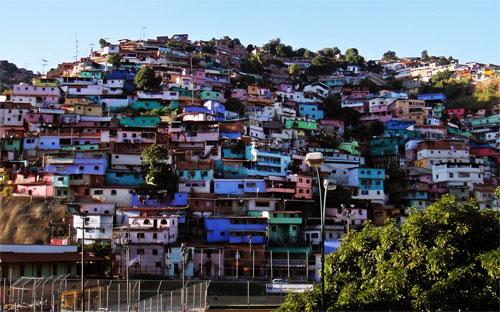
Key Takeaways:
-
Cúa is a charming Venezuelan town known for its lush landscapes, lively plazas, and deep cultural heritage.
-
Whether you’re into hiking, festivals, or historical sites, Cúa offers year-round activities beyond the tourist radar.
-
It’s an ideal weekend getaway near Caracas for travelers seeking authentic local flavor and nature-filled adventures.
Nestled in the Valles del Tuy of Miranda state, Cúa is a picturesque town rich in Venezuelan history and charm. Founded in the 17th century and later dubbed the “Pearl of the Tuy Valleys,” it played a pivotal role in colonial trade and independence-era resistance. Today, it’s known for its stunning green hills, colonial-era buildings, and festive community spirit. People love Cúa for its easygoing lifestyle, proximity to Caracas, and vibrant local traditions. Whether you’re into culture, nature, or weekend markets, Cúa serves up a refreshing slice of Venezuela in every season.
Table of Contents
-
Take in the Views at Cerro El Tinajero
-
Wander the Historic Plaza Zamora
-
Experience the Festival de la Cruz de Mayo
-
Visit the Birthplace of Ezequiel Zamora
-
Hike Through Quebrada de Cúa Natural Area
-
Discover Local Art at Casa de la Cultura
-
Cool Off at El Encantado River Pools
-
Catch a Show at Teatro Municipal de Cúa
-
Browse the Saturday Farmers’ Market
-
Explore Colonial-Era Churches and Chapels
1. Take in the Views at Cerro El Tinajero
One of Cúa’s most iconic natural landmarks is Cerro El Tinajero, a hill that offers sweeping views of the Valles del Tuy and surrounding rural countryside. The trail leading up is a moderate hike, winding through native vegetation and occasional bird sightings. As you ascend, you’ll pass stone benches and small shrines built by locals — blending natural scenery with spiritual energy. Reaching the summit rewards hikers with a panoramic view of the valley that’s especially stunning at sunrise.
Locals often make the climb early in the morning for meditation, exercise, or a quiet picnic away from the crowds. The breezy summit offers fresh air, a few shaded rest spots, and ideal photo ops for travelers wanting a memorable moment. During certain times of year, community walks and faith-based processions also take place here. If you’re looking for an uplifting experience, both physically and spiritually, Cerro El Tinajero delivers.
2. Wander the Historic Plaza Zamora
At the heart of town lies Plaza Zamora, a historic square named after General Ezequiel Zamora — one of Venezuela’s most important independence figures who was born in Cúa. The plaza is surrounded by colonial architecture, leafy walkways, fountains, and vibrant gardens that come alive with music and families during the evenings. It’s a central meeting point where vendors sell traditional snacks, artisans display handmade goods, and children play freely.
Day or night, the plaza is buzzing with life. Grab a local coffee or papelón con limón (sugarcane lemonade), find a bench, and enjoy the casual rhythm of Venezuelan community life. The plaza is also used for cultural performances and city celebrations, so keep an eye out for live music or impromptu dancing. A visit here offers an authentic taste of Cúa’s personality — welcoming, warm, and full of pride.
3. Experience the Festival de la Cruz de Mayo
Held every May, La Cruz de Mayo is one of Cúa’s most cherished cultural festivals, blending Indigenous, African, and Catholic traditions in a vibrant celebration. The town fills with music, colorful altars, traditional dress, and spiritual rituals honoring the cross as a symbol of gratitude and fertility. Locals decorate crosses with flowers and ribbons, and processions move through the streets with chants and live drums.
This festival is a perfect time to witness community spirit at its finest. Travelers are welcome to join in, take part in the offerings, and experience a celebration deeply rooted in cultural identity. It’s also a great opportunity to taste regional food prepared for the occasion — from hallacas to empanadas. If your visit aligns with this time of year, this experience alone can make your trip unforgettable.
4. Visit the Birthplace of Ezequiel Zamora
History lovers will want to explore the preserved birthplace of General Ezequiel Zamora, a national hero who played a key role in Venezuela’s 19th-century civil wars. The humble adobe house where he was born is now a museum, showcasing artifacts, letters, and exhibits about his life, values, and political legacy. It offers a fascinating look into the region’s revolutionary past and the man who came to symbolize social justice.
The museum staff are knowledgeable and often share insights not found in textbooks, adding a personal touch to the visit. The site is also part of local school field trips, so you may encounter students learning about their national history. Whether you’re a history buff or just curious about Venezuela’s roots, this stop adds important context to your exploration of Cúa. Admission is usually free or very affordable.
5. Hike Through Quebrada de Cúa Natural Area
Quebrada de Cúa is a scenic natural area just on the outskirts of town, offering trails that weave through streams, rock formations, and tropical vegetation. It’s popular among locals for weekend hikes, birdwatching, and nature picnics. The area is peaceful and shaded, with the sounds of running water and chirping birds providing a calming soundtrack. Small wooden bridges and rustic signs guide you through different parts of the reserve.
Whether you’re a casual walker or an active hiker, Quebrada de Cúa has paths for every level. During the rainy season, small waterfalls form along the trails, making the journey even more magical. The area is also a hotspot for amateur photographers and families seeking a low-cost adventure. Wear non-slip shoes and bring a waterproof bag — this spot is beautiful but can get muddy during wet months.
6. Discover Local Art at Casa de la Cultura
Casa de la Cultura Cúa is the town’s artistic and cultural epicenter, offering exhibitions, theater shows, and community workshops all year round. Housed in a beautiful colonial-style building, it supports local painters, musicians, writers, and dancers — making it a vibrant space where tradition and modern creativity blend. Visitors can explore rotating art displays, join weekend classes, or catch a performance by regional folkloric dance groups.
The center also hosts seasonal events such as poetry readings, classical guitar concerts, and holiday plays. If you’re looking to connect more deeply with the local creative scene, this is the place to do it. Staff are welcoming and occasionally offer impromptu tours or artist meet-and-greets. The atmosphere is casual, inspiring, and proudly Venezuelan — perfect for travelers who love immersive, community-driven experiences.
7. Cool Off at El Encantado River Pools
When the temperature rises, locals head to El Encantado, a river spot with natural pools just a short drive from central Cúa. Surrounded by lush vegetation and smooth stones, the pools are fed by clean, cool currents ideal for swimming or simply soaking your feet. You’ll find families grilling arepas on portable stoves, teenagers jumping into deeper pools, and vendors selling drinks and snacks nearby.
It’s not a formal resort, so bring your own towels, food, and trash bags to help keep the area clean. The river has both shallow and deeper sections, making it family-friendly while still appealing to adventurous swimmers. El Encantado is especially popular on weekends and holidays — go early if you want to snag a shaded spot. It’s a refreshing, budget-friendly way to spend a hot day in nature.
8. Catch a Show at Teatro Municipal de Cúa
For a taste of performing arts, head to the Teatro Municipal de Cúa, a beautifully restored venue that regularly hosts music, dance, and theater performances. From local talent to national touring groups, the theater presents an impressive variety of shows ranging from traditional folk to modern drama. Its elegant interior and acoustic design create an intimate viewing experience for every seat in the house.
Even if you’re not fluent in Spanish, the visual storytelling and expressive performances are still deeply enjoyable. Tickets are affordable and often available at the door, though popular shows may sell out in advance. The theater is also active in hosting youth talent shows and cultural festivals throughout the year. Whether you’re a fan of ballet, live bands, or drama, the venue adds cultural depth to your Cúa visit.
9. Browse the Saturday Farmers’ Market
Every Saturday morning, the town springs to life with its Mercado Agrícola de los Valles del Tuy, an open-air farmers’ market that brings together local producers from across the region. Colorful stalls line the main street, selling everything from organic vegetables and tropical fruits to fresh cheeses, spices, and handmade crafts. The market is not only a foodie paradise but also a great spot to meet locals and discover flavors unique to this valley.
It’s common to find live music playing in the background, along with street performers and pop-up food vendors. Don’t leave without trying cachapas (corn pancakes) or buying a bottle of homemade guava jam. The atmosphere is lively and festive, with friendly vendors eager to chat and offer samples. Whether you’re looking to stock up on travel snacks or buy souvenirs, this market is a must.
10. Explore Colonial-Era Churches and Chapels
Cúa’s spiritual roots run deep, and its historic colonial churches are both architectural treasures and peaceful places to reflect. Among the most notable is Iglesia Santa Rosa de Lima, a beautiful structure that has withstood the test of time through centuries of faith and community events. Inside, you’ll find hand-carved wooden altars, stained-glass windows, and relics from the town’s earliest religious gatherings.
Many of the chapels throughout the town also host processions, baptisms, and seasonal festivals that are open to the public. If your visit coincides with a local saint’s day or Catholic celebration, you’ll witness heartfelt traditions still practiced today. These sacred spaces are open most days and welcome visitors who wish to explore respectfully. They’re quiet, meaningful, and full of stories that bring Cúa’s history to life.
What to do if you have kids?
Cúa is very family-friendly, with a relaxed pace and safe outdoor spaces that kids can enjoy. From running through Plaza Zamora to swimming at El Encantado and hiking in Quebrada de Cúa, there’s no shortage of energy-burning fun. The Casa de la Cultura and Teatro Municipal also offer programs and workshops for children, making it easy to mix play with learning. Be sure to pack snacks, sunscreen, and comfy clothes — many of Cúa’s best experiences are outdoors and hands-on.
Where can I find free events in Cua Venezuela taking place this weekend?
To find out what free local events are happening this weekend in Cúa — from folkloric shows and outdoor concerts to cultural parades and public markets — use https://planmyweekend.ai. This AI-powered tool automatically curates activities based on your interests and location, so you can discover hidden gems without paying a bolívar. Whether you’re into art, food, or family fun, it’s the easiest way to plan your weekend like a local.
Final Thoughts
Cúa may not be as well-known as Venezuela’s bigger cities, but that’s exactly why it shines. It offers a slice of real life, where community, culture, and natural beauty meet in every season. With its historical depth, vibrant festivals, and scenic escapes, it’s a place that welcomes travelers with open arms and leaves a lasting impression. Whether you’re coming for the day or staying for a week, Cúa invites you to slow down, look around, and fall in love with its quiet charm.
Author: Dejon Brooks
Dejon Brooks is an entrepreneur who founded Trend Watchers with his life savings. Aged 24, Dejon has turned Trend Watchers into a successful business. After reaching over 150M+ people on his personal accounts, he now spends his time growing Planmyweekend.ai


